 | TODAY IN SCIENCE HISTORY NEWSLETTER - 1 JUNE |
| Feature for Today |
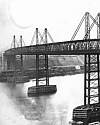 On 1 Jun 1878, the original Tay Bridge was officially opened by Queen Victoria. It carried a single rail line across the Forth of Tay on the east coast of Scotland. At almost 2 miles in overall length, it was for its time the world's longest bridge. The engineer was Thomas Bouch, who supervised construction, and was knighted for his work. On 1 Jun 1878, the original Tay Bridge was officially opened by Queen Victoria. It carried a single rail line across the Forth of Tay on the east coast of Scotland. At almost 2 miles in overall length, it was for its time the world's longest bridge. The engineer was Thomas Bouch, who supervised construction, and was knighted for his work.Sadly, the structure was inadequate in both design and quality to withstand gale force winds, and on 28 Dec 1879, its cast iron piers collapsed as a train crossed the high navigation spans. The engine and carriages fell into the water taking over 75 passengers to their deaths. An official inquiry found Bouch at fault, and that poor maintenance procedures weakened the piers and contributed to the failure. An article on the construction of the Tay Bridge by Albert Groethe, Manager of the Tay Bridge Contract, published in the year it opened, 1878, explains why the bridge was needed, how adverse weather was encountered while it was being erected, and shows a Victorian optimism while the imminent tragedy-to-be remained unforeseen. The article still makes very interesting reading for the engineering techiques employed in the building of a bridge that at the time was meeting a challenge never before attemped. |
| Book of the Day | |
| |
| Quotations for Today | |
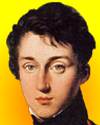 | "The production of motion in the steam engine always occurs in circumstances which it is necessary to recognize, namely when the equilibrium of caloric is restored, or (to express this differently) when caloric passes from the body at one temperature to another body at a lower temperature." |
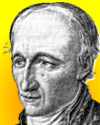 | "A casual glance at crystals may lead to the idea that they were pure sports of nature, but this is simply an elegant way of declaring one's ignorance. With a thoughtful examination of them, we discover laws of arrangement. With the help of these, calculation portrays and links up the observed results. How variable and at the same time how precise and regular are these laws! How simple they are ordinarily, without losing anything of their significance! The theory which has served to develop these laws is based entirely on a fact, whose existence has hitherto been vaguely discerned rather than demonstrated. This fact is that in all minerals which belong to the same species, these little solids, which are the crystal elements and which I call their integrant molecules, have an invariable form, in which the faces lie in the direction of the natural fracture surfaces corresponding to the mechanical division of the crystals. Their angles and dimensions are derived from calculations combined with observation." |
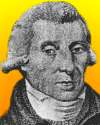 | "Geological facts being of an historical nature, all attempts to deduce a complete knowledge of them merely from their still, subsisting consequences, to the exclusion of unexceptionable testimony, must be deemed as absurd as that of deducing the history of ancient Rome solely from the medals or other monuments of antiquity it still exhibits, or the scattered ruins of its empire, to the exclusion of a Livy, a Sallust, or a Tacitus." |
| QUIZ | |
| Before you look at today's web page, see if you can answer some of these questions about the events that happened on this day. Some of the names are very familiar. Others will likely stump you. Tickle your curiosity with these questions, then check your answers on today's web page. | |
| Births | |
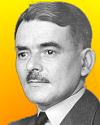 |  Sir Frank Whittle, born 1 June 1907, was an English aviation engineer and pilot who developed aircraft that could fly at faster speeds and higher altitudes than piston-engine propeller airplanes of the 1920s. Beginning in 1930, while still only in his early 20's, he had designed and patented a new form of propulsion. Sir Frank Whittle, born 1 June 1907, was an English aviation engineer and pilot who developed aircraft that could fly at faster speeds and higher altitudes than piston-engine propeller airplanes of the 1920s. Beginning in 1930, while still only in his early 20's, he had designed and patented a new form of propulsion. What was his pioneering invention? What was his pioneering invention? |
 |  On 1 June 1796 a French physicist was born. He became a captain of engineers in the army, and spent much of his life investigating the design of steam engines. His book Reflections on the Motive Power of Heat (1824) contained a theorem which says that a maximum efficiency of heat engine can be obtained by a reversible engine, and that efficiency depends only on the temperatures of the hot and the cool sources of the engine. This theorem played an essential role for the subsequent development of thermodynamics. On 1 June 1796 a French physicist was born. He became a captain of engineers in the army, and spent much of his life investigating the design of steam engines. His book Reflections on the Motive Power of Heat (1824) contained a theorem which says that a maximum efficiency of heat engine can be obtained by a reversible engine, and that efficiency depends only on the temperatures of the hot and the cool sources of the engine. This theorem played an essential role for the subsequent development of thermodynamics.  Can you name this man? Can you name this man? |
| Deaths | |
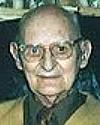 |  Sir Christopher Cockerell (1910-1999) was an electronics engineer with the Marconi Company (1935-50) where he worked on airborne navigational equipment and on radar. But this had little to do with the pioneering invention for which he is known. Once he began his own boat-hire business, he turned his attention to a new form of watercraft. In 1954, he performed a crucial experiment to test his idea using kitchen scales, tin cans, and a vacuum cleaner. Sir Christopher Cockerell (1910-1999) was an electronics engineer with the Marconi Company (1935-50) where he worked on airborne navigational equipment and on radar. But this had little to do with the pioneering invention for which he is known. Once he began his own boat-hire business, he turned his attention to a new form of watercraft. In 1954, he performed a crucial experiment to test his idea using kitchen scales, tin cans, and a vacuum cleaner.  What watercraft did he invent? What watercraft did he invent? |
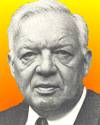 |  Werner Forssmann (1904-1979) was a German surgeon who shared the Nobel Prize for Physiology or Medicine in 1956 for the development of a new surical technique. He used a catheter in a new way. This was a tube inserted through a vein passed through the vein deep into the body. Drugs could then be introduced through this. After practice on cadavers, he introduced a 65-cm catheter into his own body, walked up several flights of stairs to the x-ray department and calmly confirmed that the location of the catheter. Werner Forssmann (1904-1979) was a German surgeon who shared the Nobel Prize for Physiology or Medicine in 1956 for the development of a new surical technique. He used a catheter in a new way. This was a tube inserted through a vein passed through the vein deep into the body. Drugs could then be introduced through this. After practice on cadavers, he introduced a 65-cm catheter into his own body, walked up several flights of stairs to the x-ray department and calmly confirmed that the location of the catheter.  What was the target in the body of his catheter procedure? What was the target in the body of his catheter procedure? |
| Events | |
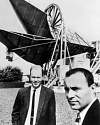 |  In 1965, A. Penzias and R. Wilson detected a very low temperature primordial background radiation using a horn reflector antenna built for radio astronomy. The Big Bang description of the origin of the universe took place 15 to 20 billion years ago in an explosion from a hot dense state. The high energy radiation produced when the universe was very young and very hot would have been absorbed and degraded as the universe expanded and cooled. The microwave background radiation first observed by Penzias and Wilson is thought to be a relic of this very early state, when the universe was only about a million years old. The uniformity of microwave background indicates that the universe was homogeneous until it was a few million years old. In 1965, A. Penzias and R. Wilson detected a very low temperature primordial background radiation using a horn reflector antenna built for radio astronomy. The Big Bang description of the origin of the universe took place 15 to 20 billion years ago in an explosion from a hot dense state. The high energy radiation produced when the universe was very young and very hot would have been absorbed and degraded as the universe expanded and cooled. The microwave background radiation first observed by Penzias and Wilson is thought to be a relic of this very early state, when the universe was only about a million years old. The uniformity of microwave background indicates that the universe was homogeneous until it was a few million years old. What temperature did this radiation represent? What temperature did this radiation represent? |
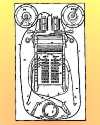 |  In 1869, a prodigious American inventor, received his first patent. It was for an "electrographic vote recorder." The device was the first of its kind, and would enable a legislator to register a vote either for or against an issue by turning a switch to the right or left. In 1869, a prodigious American inventor, received his first patent. It was for an "electrographic vote recorder." The device was the first of its kind, and would enable a legislator to register a vote either for or against an issue by turning a switch to the right or left. Can you name this inventor? Can you name this inventor? |
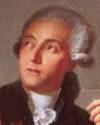 |  In 1768, a famous French chemist sat for the first time at the Royal Academy of Sciences. He had been on the list of candidates for two years. The death of Th�odore Baron had liberated a place at the Academy for a chemist and supported by his father's friends, and others, he was elected. His first papers were reports on analysis: studies of gypsum, the diamond, meteorites, charcoal, lead and mineral waters. In 1768, a famous French chemist sat for the first time at the Royal Academy of Sciences. He had been on the list of candidates for two years. The death of Th�odore Baron had liberated a place at the Academy for a chemist and supported by his father's friends, and others, he was elected. His first papers were reports on analysis: studies of gypsum, the diamond, meteorites, charcoal, lead and mineral waters. Can you name this chemist? Can you name this chemist? |
| Answers |
When you have your answers ready to all the questions above, you'll find all the information to check them, and more, on the June 1 web page of Today in Science History. Or, try this link first for just the brief answers. Fast answers for the previous newsletter for May 31: nitric oxide (NO); a connection between solar variations and weather on Earth; asymmetrical shapes of certain atomic nuclei; first woman to gain the M.D. degree from a medical school in the United States; the decade including the year 1879; dating from about the 3rd century, they were used then by the Christians of Rome since they were forbidden to bury their dead in regular burial grounds; Dr. John Harvey Kellogg. |
| Feedback |
 If you enjoy this newsletter, the website, or wish to offer encouragement or ideas, please send feedback by using your mail reader Reply button. If you enjoy this newsletter, the website, or wish to offer encouragement or ideas, please send feedback by using your mail reader Reply button. |
--
If you do not want to receive any more newsletters, Unsubscribe
To update your preferences and to unsubscribe visit this link


Δεν υπάρχουν σχόλια:
Δημοσίευση σχολίου